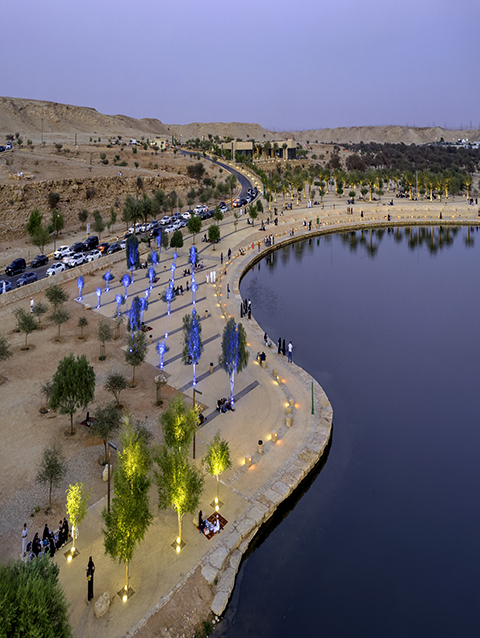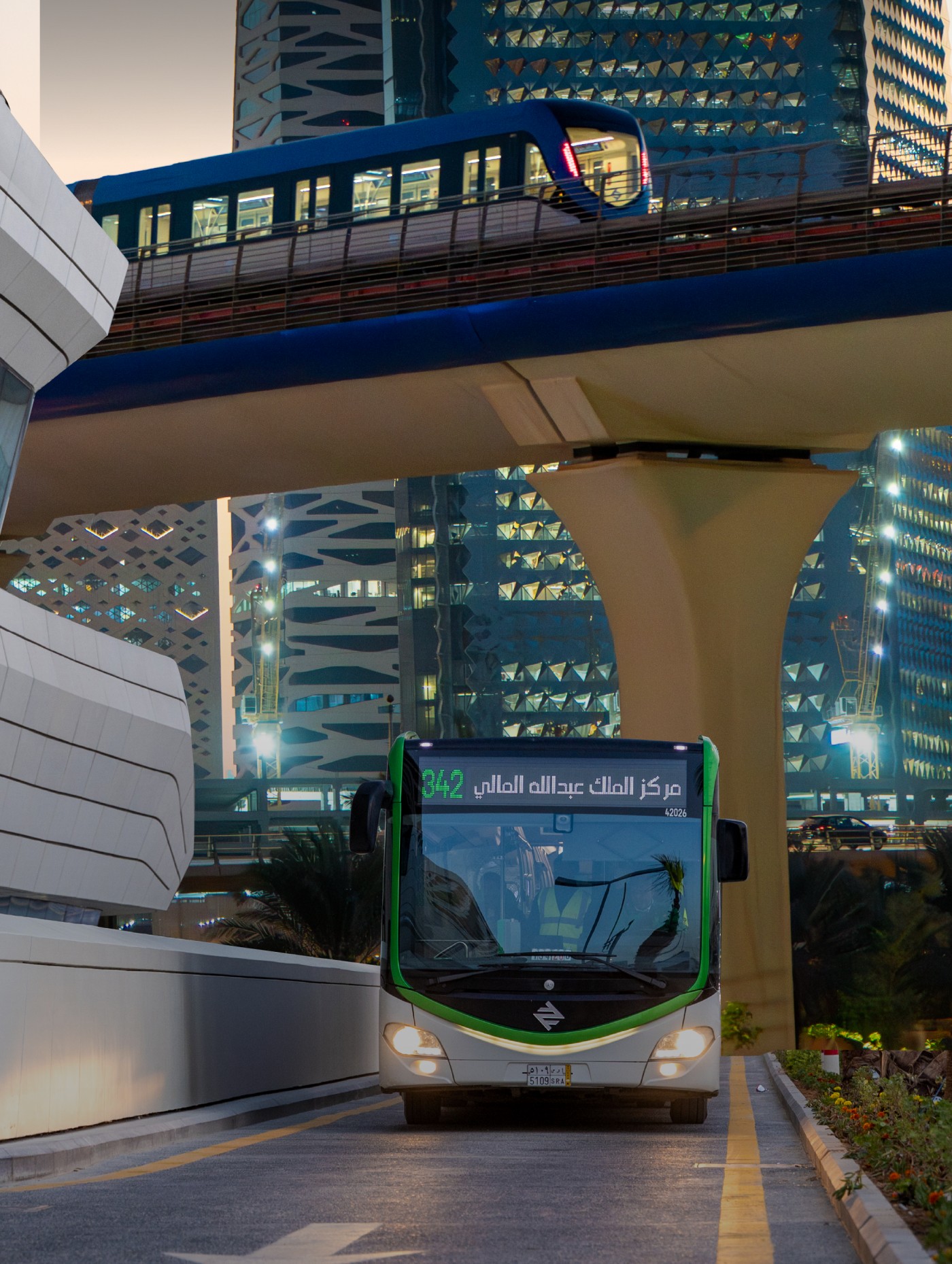HOME / PROGRAMS AND PROJECTS
Extension of Abu Bakr Al-Siddiq and Al-Orouba roads
RCRC implemented a project to extend Abu Bakr Al-Siddiq Road in the south to Salah Al-Din Al-Ayyubi Road, a length of approximately 5 km, and extend Al-Oruba Road towards he east up to its confluence with Abdul Rahman Al-Ghafiqi Street at the Eastern Ring Road, a length of 6 km.
As soon as the project was launched, the two roads attracted half a million trips per day, playing a major role in activating the interconnection between the city’s destinations and improving traffic flow on Makkah Al-Mukarramah Road, King Fahd Road, Eastern Ring Road, and King Abdul-Aziz Road in parallel.

Project elements
The two-road project included a number of elements aimed at achieving high traffic capacity, providing a safe environment, improving traffic management and safety, facilitating operation and maintenance, aesthetic elements, guiding services, and functional and aesthetic lighting.
The main road consists of three 3.6 meters wide lanes, a 2.8 meters wide emergency lane in each direction, special entry and exit lanes, and a median island 3.5 meters wide. In addition, a tunnel was built on King Abdulaziz Road at its intersection with Al-Urouba Road, with a length of 995 meters, including paths to circumvent King Abdulaziz Road north and south.

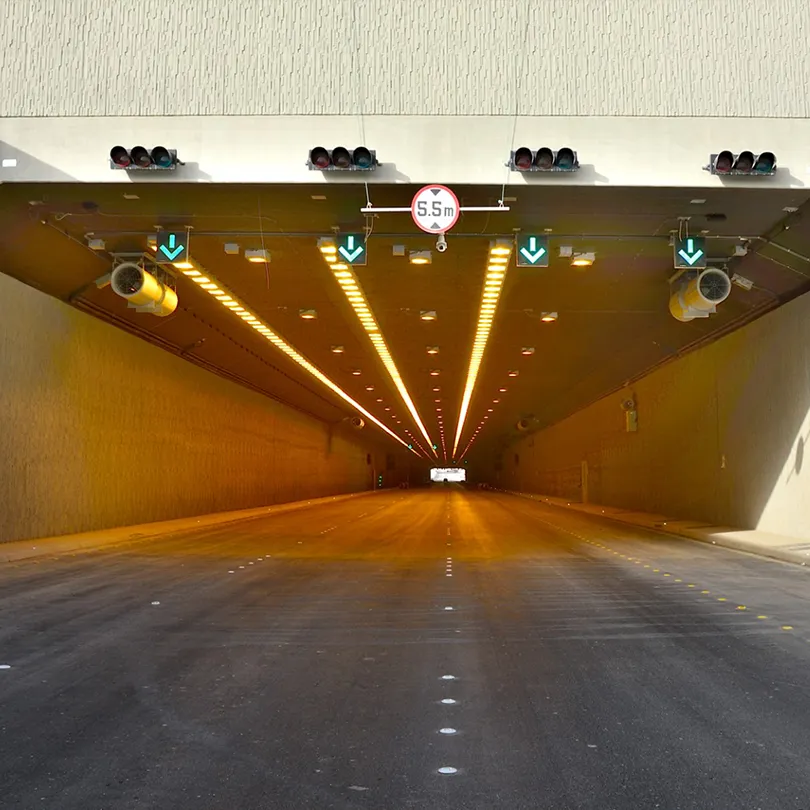
Tunnel and bridge
integration
The project included the implementation of five tunnels with a total length of over 2km and two bridges, one with a length of 210 meters and the other with a length of 41 meters. An overpass was also implemented at the intersection of Al-Oruba Road with the Eastern Ring Road (Exit 11) to transport traffic coming from the south through the eastern ring of Al-Oruba Road towards the west, with a length of 750 meters and a width of two lanes.
Prince Sattam Square
At the heart of the project is Prince Sattam bin Abdulaziz Square, one of the largest squares in the city of Riyadh, covering an area of 330,000m2 and forming a free intersection for the movement of detours in all directions, and the uninterrupted flow of traffic between Al-Urouba Road and Abu Bakr Al-Siddiq Road. Aesthetic touches include the installation of 1,256 artistic models of aircraft, 45 flags of the Kingdom of Saudi Arabia, and 42 aesthetic funnels to determine the direction of the wind, which gave the square visual appeal and a modern spirit in harmony with the surroundings.

Safety systems
The fully covered tunnels provide a high flow of transit traffic on the two main axes of the city, and ensure that the tunnels perform these tasks efficiently. The tunnels are equipped with many security and safety systems, including light intensity sensor systems inside the tunnels, vehicle traffic counting sensors that activate traffic signs at the tunnel entrance to manage traffic flow, in addition to ventilation fans, 58 emergency points connected to call centers, surveillance cameras along the tunnels, alarm bells, and escape doors between the tunnel tracks equipped with lights.
In addition, 132 detectors, loudspeakers and a set of pedestrian light markers were deployed inside the tunnels to help identify escape doors, in addition to providing the tunnels with doors for emergency vehicles and openings for turning before and after the tunnel. It is also possible to communicate with drivers in emergency situations using a system that sends messages to car radio using FM waves.
Ventilation
The tunnels are equipped with 113 ventilation fans, which push air out in the direction of traffic on each side, and the direction of air flow can be reversed in the event of fire to increase the effectiveness of the extinguishing process. Ventilation fans operate.
Automatically; fan speed and direction are controlled by sensors that measure levels of carbon and nitrogen, as well as temperature. The ventilation system is monitored and controlled remotely through central control rooms.


Integrated fire extinguishing systems
Fires are one of the main risks that can occur in tunnels due to the increased potential of flammable gases igniting.
As a countermeasure, tunnels are equipped with firefighting and fire extinguishing systems which are based around four main elements: early warning, fixed and mobile firefighting points, fire extinguishing cylinders, and emergency exits.
Multiple lighting systems
Lighting in both road tunnels is specified to the highest technical and aesthetic standards. The tunnels are equipped with around 7,000 lighting units, consisting of regular lighting units and backup lighting units for emergencies and is divided into night and day lighting.
The tunnels are also equipped with LED markers of two colors (red and white) in opposite directions to identify both sides of the road inside the tunnels, and to specify the path to be followed by pedestrians in emergency cases. The lighting of the paths at the sides of the two roads use 330 poles, each with a height of 16 meters. Lighting of pathways at Prince Sattam Square are illuminated by 122 lighting poles with a height of 12 meters.

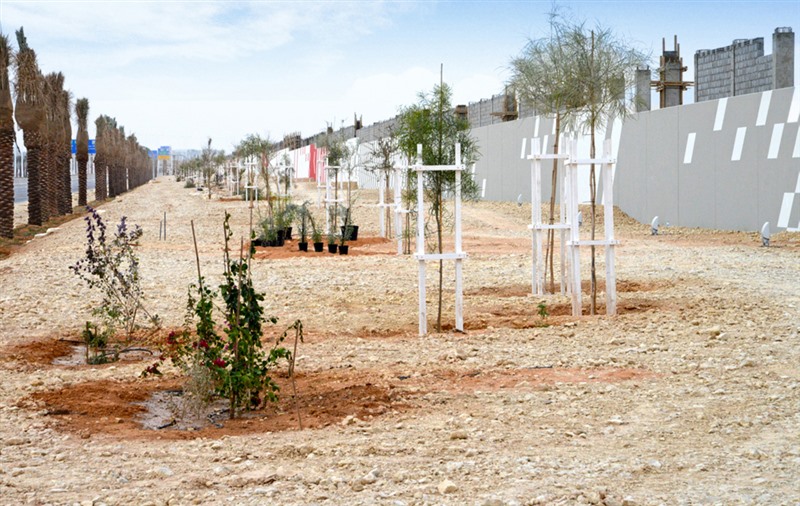
Fences in aesthetic and functional forms
Fences were erected on both sides of the road, 11 km long and 3 meters high. In some parts of the project, a wall 8 km long and 5 meters high was erected. These walls are decorated with aesthetic and functional drawings and shapes.
Afforestation
The project embraced about 1,000 palm trees planted in the vicinity of the roads and between their various elements. More than 3,000 trees and shrubs were planted throughout the project. About 45,000 square meters were laid with natural grass, and 200,000 square meters with artificial grass, to contribute to reducing environmental pollution caused by environmental pollution. Carbon monoxide emissions from road vehicles.
Irrigation and drainage systems
The tunnels were provided with 18 main pumps to drain the flood waters, and 5 backup pumps, in addition to an irrigation network inside the water treatment plant equipped with seven large pumps to irrigate the green areas in the project, with an estimated production capacity of 2,800 cubic meters per day, while the capacity of the reservoir is 6,000 meters. cube.
The project also provided a 10.6-kilometer-long channel for draining torrential rains. Networks were equipped to drain ground water and others to drain fire water. Four deep wells were dug, and two environmental monitoring stations were established to monitor rainfall, humidity and wind speed at the site.
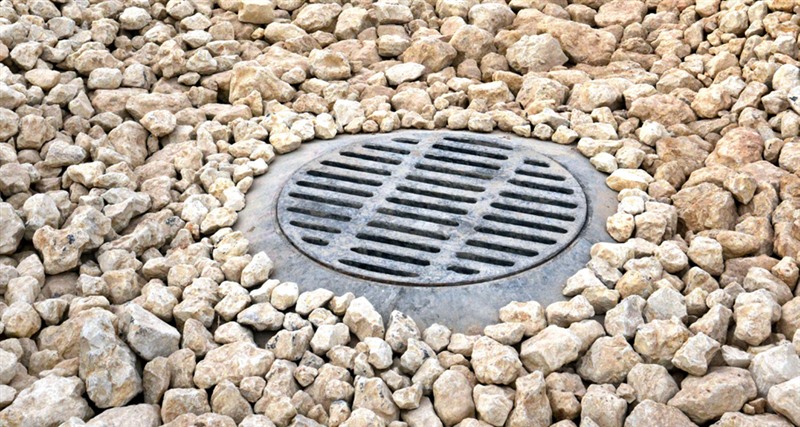

Advanced traffic management systems
The project integrates advanced traffic management systems that help to optimize traffic capacity of the roads, increase flow, and raise safety levels. The main roads were equipped with 22 road signs, 161 variable-message signs, and another 120 lane control signs inside the three tunnels.
Traffic movement is monitored at intersections and along roads by 260 fixed cameras and 34 pivot cameras.
Central Control
room
At the central control room, traffic management systems, operated by specially trained personnel, ensure optimum traffic flows, and provide road users with automatic signage directions during traffic congestion and in the event of accidents.
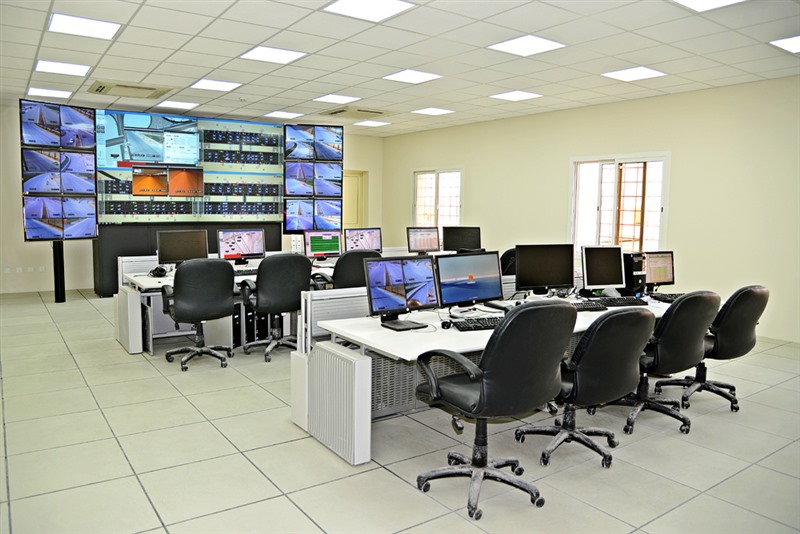
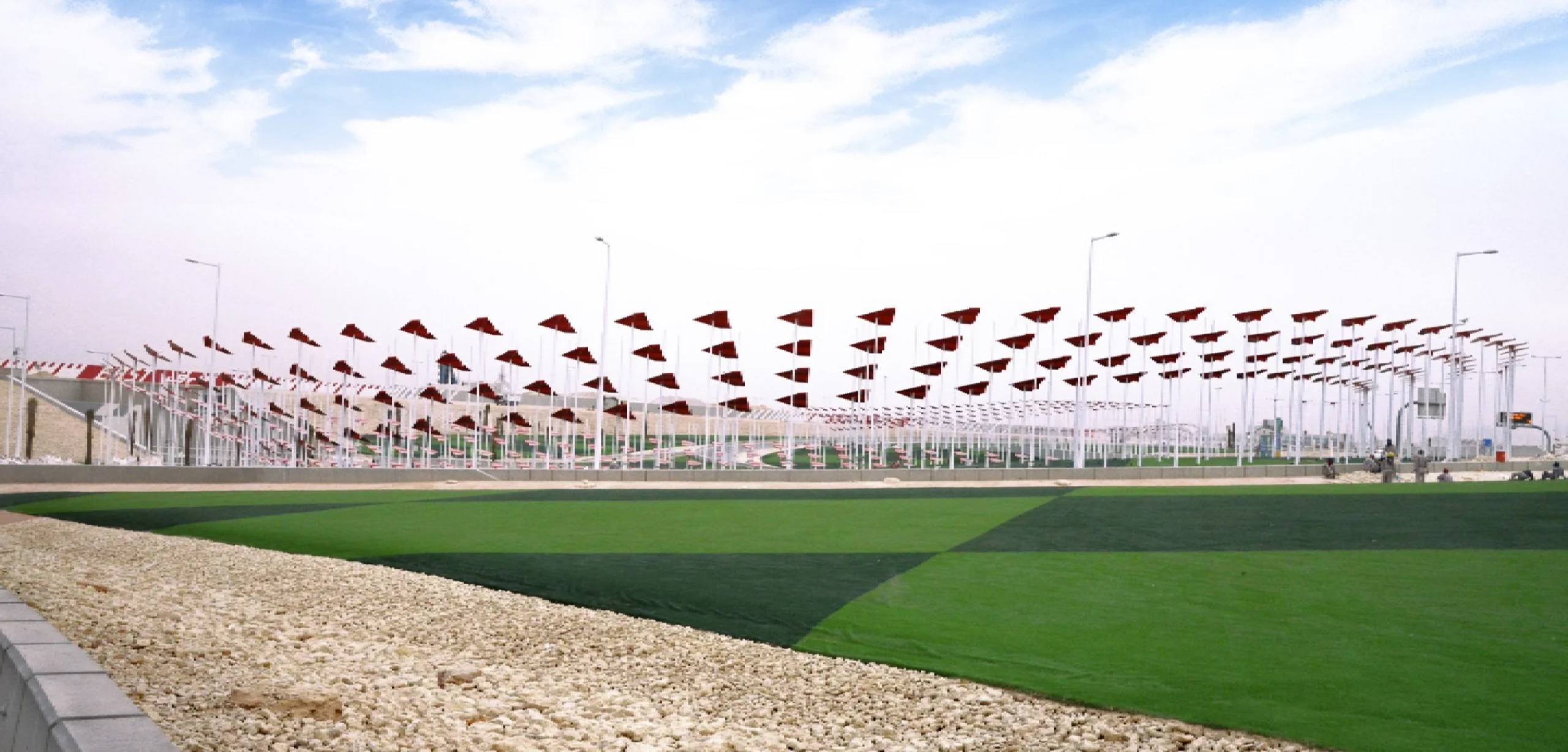
Project opening
On the morning of Sunday, Rabi` al-Thani 28 1434 AH (March 10, 2013 AD), HRH Prince Khalid bin Bandar bin Abdulaziz, Governor of Riyadh Region at the time, patronized the opening of the project of extending Abu Bakr Al-Siddiq and Al-Urouba Roads and the tunnel project at the intersection of King Abdulaziz Road with Al-Urouba Road.
